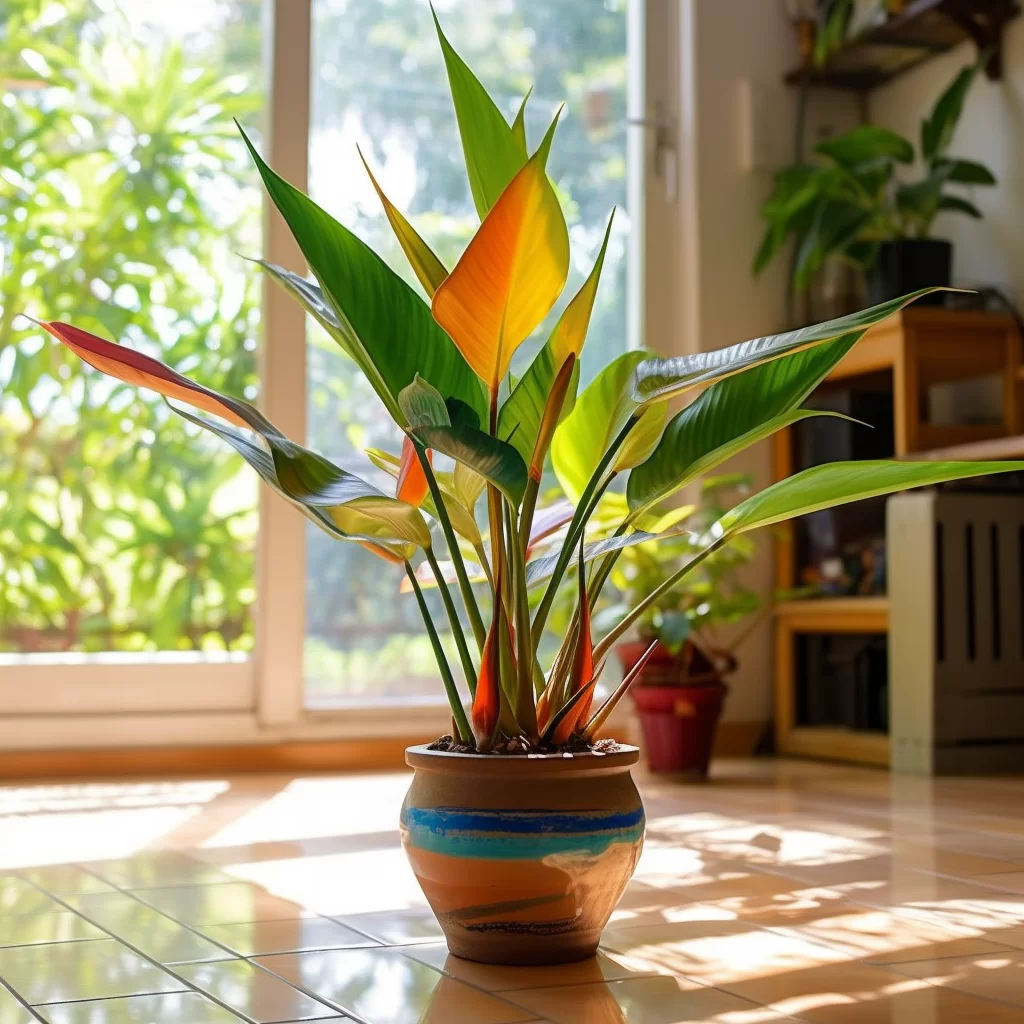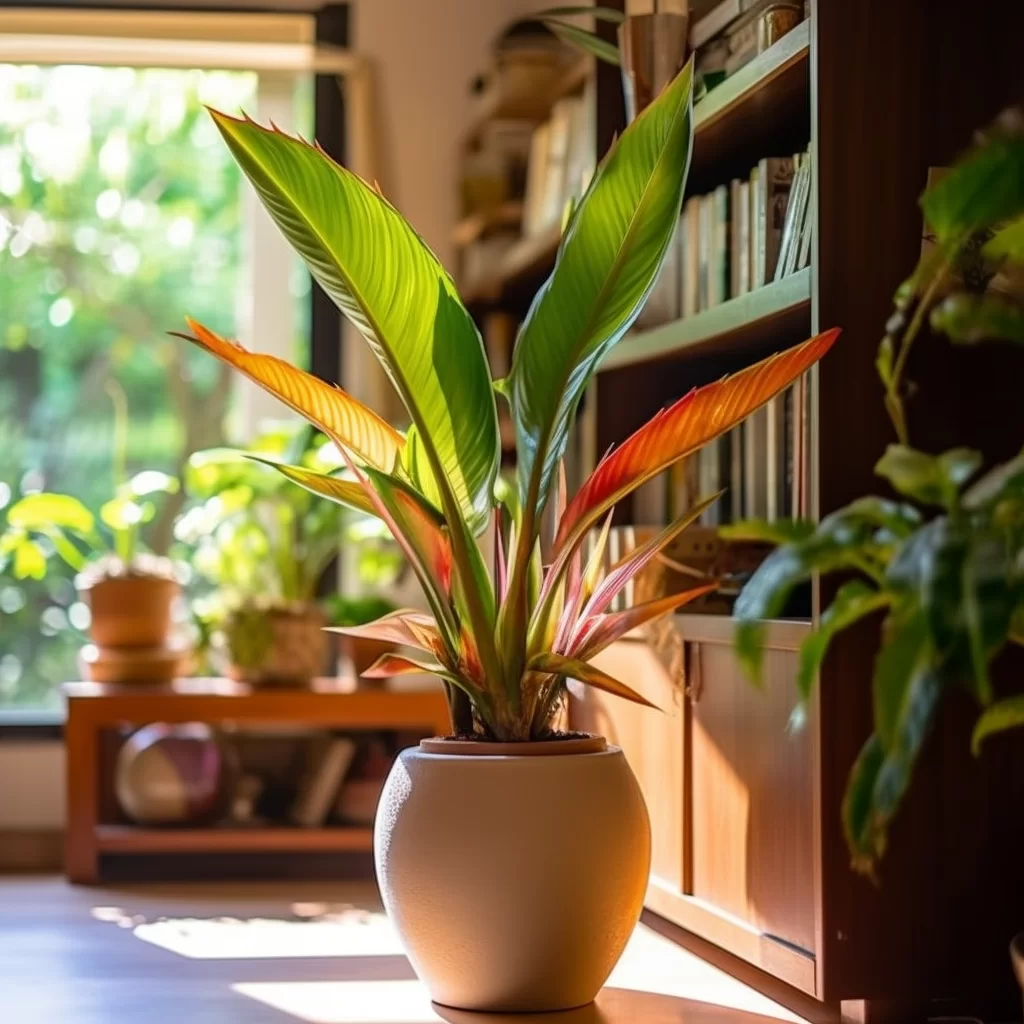Story of Day :
Contents
Bird of Paradise House Plant: Complete Guide and Care Tips
Welcome to the wild and wonderful world of bird of paradise house plants! These tropical beauties are known for their strikingly colorful flowers that resemble birds in flight.
With proper care, your bird of paradise can thrive as an indoor plant, bringing a touch of exotic flair to any space.
In this guide, we’ll cover everything you need to know about taking care of your bird of paradise.
What is a Bird Of Paradise Plant?
The bird of paradise (Strelitzia reginae) is a native South African plant that belongs to the Strelitzia genus.
It’s also commonly called crane flower or simply strelitzia.
The plant has large paddle-shaped leaves with vibrant orange and blue flowers that look like birds in flight when fully bloomed.
How To Care For Your Bird Of Paradise

To keep your bird of paradise healthy and thriving indoors, follow these essential care tips:
- Light: These plants love bright light but don’t like full sun exposure since it can burn the leaves.
Place your plant in an area where it gets bright indirect light for at least six hours daily.
- Temperature: This tropical beauty prefers warm temperatures between 65°F-85°F (18°C-29°C).
Avoid placing it near drafts or air conditioning vents since they can cause temperature fluctuations that stress out the plant.
- Watering: Water regularly but avoid overwatering since standing water can lead to root rot diseases.
Wait until the top inch soil dries before watering again, usually every one to two weeks.
- Fertilizing:The best fertilizers for bird of paradise plants are water-soluble fertilizers.
You should apply fertilizer every two months in the growing season, and none during the winter period.
- Humidity: These tropical plants prefer high humidity levels between 50%-70%.
If you live in a dry climate, consider using a humidifier to boost moisture levels around your plant.
How To Repot Bird Of Paradise Plant?
If your bird of paradise is outgrowing its pot or if it appears rootbound, it’s time to repot.
Follow these steps:

- Selecting The Right Pot Size: Select a pot that’s one size larger than the current one, with proper drainage holes
- Picking The Right Soil Mix: You should use fertile soil mixed with perlite or sand to enhance drainage capacity.
- Carefully Remove The Plant from Current Pot: Gently remove the plant from the old container without damaging any roots and shake off excess dirt.
- Add Fresh Soil To New Container: Pour fresh soil mix into your new container until it reaches about one-third full.
- Add Your Plant into new Container: Carefully place your plant on top of the fresh soil while ensuring that its base is levelled with the rim of the container.
Fill up all spaces around evenly with soil mixtures
- Firm Up And Water Your New Potted Plant: Gently press down on topsoil so that it holds firmly and give enough water until water runs through drainage holes.
Common Bird Of Paradise Plant Problems
Bird of paradise plants are generally robust and not prone to many pests or diseases.
However, a few common problems you may encounter include:
- Yellowing Leaves: This is often caused by overwatering, a lack of sunlight or low humidity.
- Leaf Tip Browning or Curling: This could be due to high salt content in the soil.
You should flush your plant with distilled water several times to reduce salt build-up and repot in fresh soil mixtures.
- Lack Of Blooming: If your plant stops blooming, it could indicate that it’s not getting enough light or too much fertilizer.
Reduce extra feedings for some time and move the plant near bright indirect sunlight.

In Conclusion
Bird of paradise plants are stunning additions to any home decor.
By following these simple care tips outlined above, you can help ensure your bird of paradise thrives indoors while providing greenery beauty that strengthens the bond between nature and humans.
Happy growing!